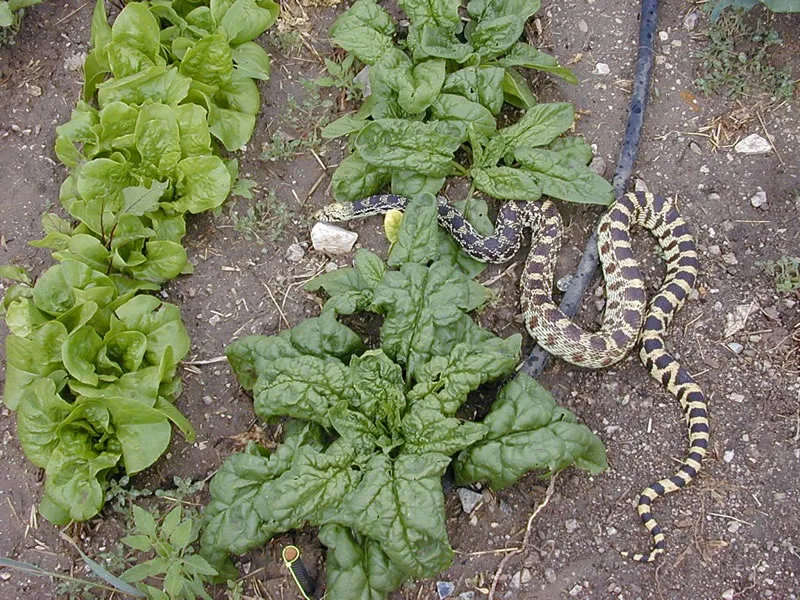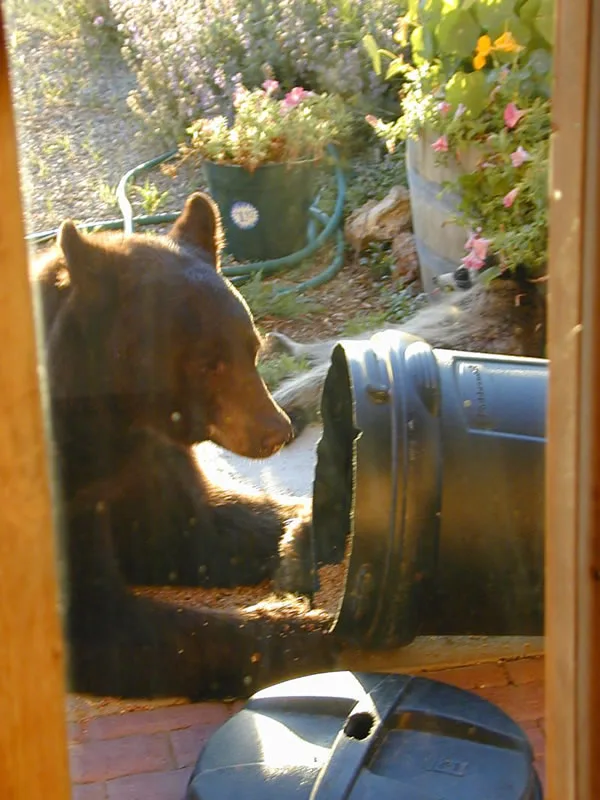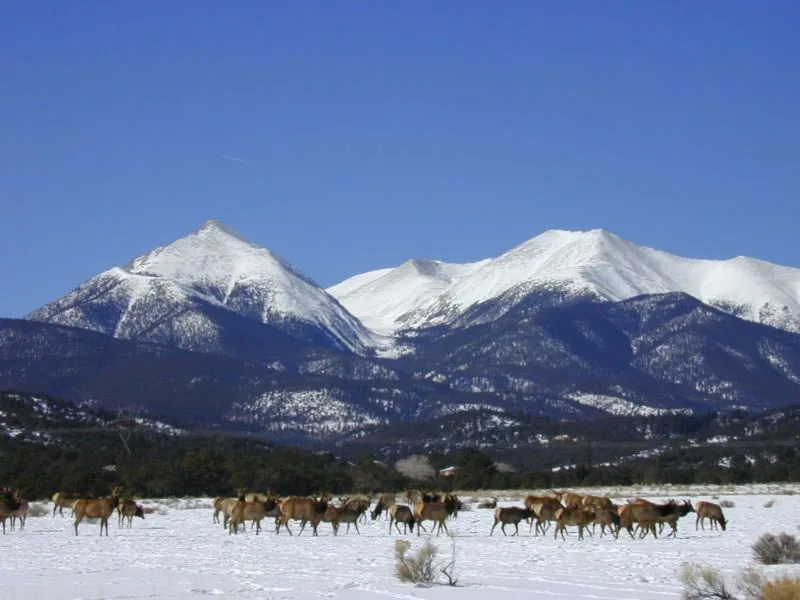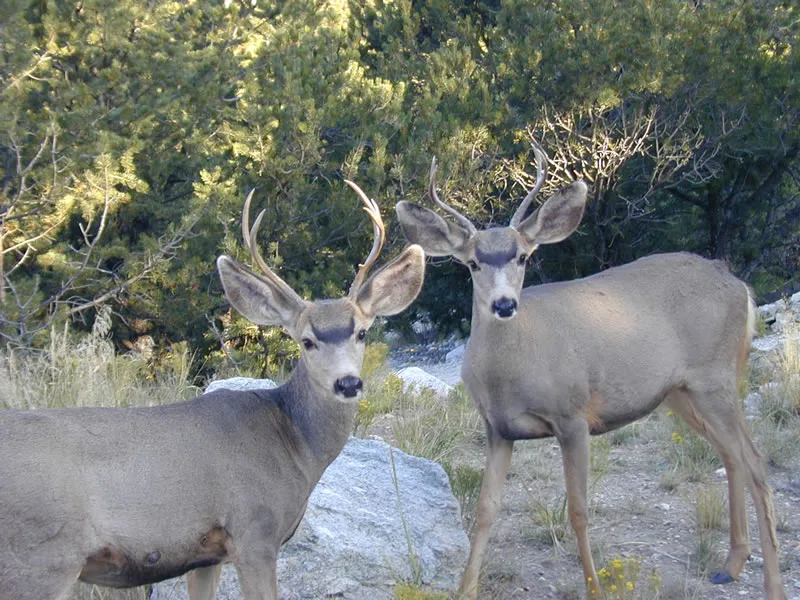Grab your camera, binoculars, and spotting scopes and come to the Arkansas River Valley where you can watch wildlife in their natural setting. Colorado’s 960 species of wildlife make an extraordinary contribution to the quality of life we all enjoy in this state and in Chaffee County! The abundance of wildlife provides a myriad of opportunities for various outdoor activities.
Coexistence with wildlife is an enjoyable part of living in the mountainous environment of Colorado. The key to coexistence is to respect the wildness of wildlife. As more houses are built in the mountainous areas and in the foothills, human and domestic animal encounters with wildlife inevitably increase. Elk, deer, mountain lion, bear, fox, turkey, beaver, porcupine, coyote, birds, and other animals are found in this environment.
There are 110 watchable wildlife viewing areas throughout the state, 25 of which are located on BLM lands. The official Colorado “Wildlife Viewing Guide” provides a detailed description of each area, including a map, type of wildlife in the area, and time of year that is best for viewing. 
The following Colorado Division of Wildlife guidelines are provided to assist the mountain dweller to better coexist with wildlife:
The Valley winters provide an excellent opportunity for viewing wildlife. Winter snows and cold usually drive game down to lower elevations where there is more forage. For viewing elk, the best place to look is along Hwy 285 between Poncha Springs and Centerville where alfalfa fields are frequent grazing areas, and in the Brown’s Creek area southwest of Nathrop. In addition, there is a large herd of elk often visible off County Rd 306 north of Buena Vista. Another favorite grazing spot is along Hwy 50 from just below CR 226 to Garfield. The best time to view elk is early morning or dusk.
Bighorn sheep are often visible in Chaffee and Fremont counties. The best place to view them is at Chalk Creek, five or six miles west of US 285 on CR 162, west of Nathrop near Love Ranch where there is a feeding station. Above the baiting grounds you can often see rocky mountain goats. The goats frequent higher, steeper elevations and can be approached up to a moderate distance before being scared off. Bighorn sheep are also often visible on the hillsides (and sometimes on the road) in Bighorn Sheep Canyon between Salida and Parkdale and they have been seen atop Tenderfoot Mountain.
If you plan a hike up Mt. Shavano, Mt. Tabeguache or Mt. Antero, you may catch a lucky sighting of a mountain goat. These magnificent animals were first brought into the Upper Arkansas Valley by the Salida Chapter of the International Order of Rocky Mountain Goats founded in 1966. The organization encourages the preservation of the Rocky Mountain goat herd in the Collegiate Peaks area. The work of this organization has resulted in over 400 of the mountain goats living in the area around Mt. Princeton. The goats may also be seen on the cliffs above Cottonwood Lake.
Mule deer and antelope are other large animals that are highly visible. Mule deer can be seen in many locations particularly in the early mornings or late evenings. (You can almost always find some on the golf course in Salida.) Antelope can be observed four or five miles over Poncha Pass in the open flats and on the mesa north of Mesa Antero. They may also be seen on the northeast side of CO 291.
Many other species may be observed at various times. Some, like bobcats and mountain lions, are secretive animals and sightings are rare. It is not unusual to spot a black bear in late summer to early fall before hibernation when bears are stocking up for a long winter’s sleep. Though encounters are minimal, campgrounds are a likely spot to see them and if you are a camper, make sure you take necessary precautions to prevent them from visiting. Coyotes abound but are elusive animals so if you see one, look quickly before he is gone.
Photographing wildlife is an exciting and challenging experience. It is recommended that you use a 400 or faster speed film to capture them.
Birding is a simple past time that requires little special equipment. Field guides and binoculars combined with a bit of patience are all that one needs to spend hours of enjoyment studying the local bird species. But just what types of birds would you expect to see at an elevation of 7,000 feet and higher? Amateur ornithologists might be surprised at the variety of birds present in the Upper Arkansas Valley. Though there may be fewer resident species of birds in the Valley than in other places, it is a natural north-south migration path for various species. The valley’s migration pathway gives one the opportunity to watch birds that migrate to higher elevations, birds such as Towhees, grosbeaks, tanagers, hummingbirds, wrens, creepers, and nuthatches.
Summer residents of the valley include: Western and pied-billed grebes, double-crested cormorants, great blue heron, blue-winged and cinnamon teals, wood duck, Canada goose, mallard, common merganser and redhead, red-tailed hawk, golden eagle, American kestrel, ringnecked pheasant, Virginia rail, sora and American coot, killdeer, spotted sandpiper, California gulls, ringbilled gull, rock dove, mourning dove, yellow-billed cuckoo, common screech owl, great horned owl, burrowing owl, common nighthawk, white-throated swift and the broad-tailed hummingbird, rufous hummingbird, belted kingfisher, common flicker, downy woodpecker, Eastern and Western kingbirds, Western wood peewee, horned lark, tree, barn and cliff swallows, Steller’s jay, blue and pinon jays, black-billed magpie, American crow and black capped and mountain chickadees, house wren, American dipper, rock wren, gray catbird, American robin, Swainson’s thrush, European starling, red-eyed vireo, warbling vireo, Virginia’s warbler, yellow warbler, yellow-rumped warbler, common yellowthroat, yellow-breasted chat, American redstart, house sparrow, Western meadowlark, yellow-headed blackbird, red-winged blackbird, Northern oriole, Brewer’s blackbird, common grackle and brown-headed cowbird, blue grosbeak, indigo bunting, lazuli bunting, Cassin’s and house finches, American goldfinch, lesser goldfinch, rufous-sided towhee, lark sparrow, chipping sparrows, and song sparrows.
A complete Upper Arkansas Valley bird checklist is available at the Heart of the Rockies Chamber of Commerce information center. The checklist, provided by the Heart of the Rockies Audubon, will include a list of previously sighted birds with notations on residence and migratory status. This local chapter of the National Audubon Society encompasses a large geographic area which includes Leadville and Texas Creek in the south. A good description of many species of birds mentioned above can be found on the Colorado Birding Page.
Now that you have had a full day of watching Colorado wildlife in their mountain “homes,” why not find your own Salida home for the evening and get a little rest and relaxation at one of Salida’s lodging facilities? Check out our Salida Lodging page where you will find the best hotels, motels, bed and breakfast inns, and Salida vacation rentals. It is your choice as to what type of lodging you want and where you want it—in the midst of the quaint downtown… within walking distance of Salida’s historic business district…near the Salida Hot Springs…alongside the Arkansas River whitewater…or perhaps one of our hotels or motels on Rainbow Boulevard (Highway 50)? We have affordable, cheap hotels; comfortable rooms; pet friendly lodging; and for those looking for the hostel experience, we have that as well—the Simple Lodge & Hostel of Salida.
Who knows, you may just fall in love with our Colorado mountain town and find yourself looking for some Salida real estate in this “Gem of the Rockies.”